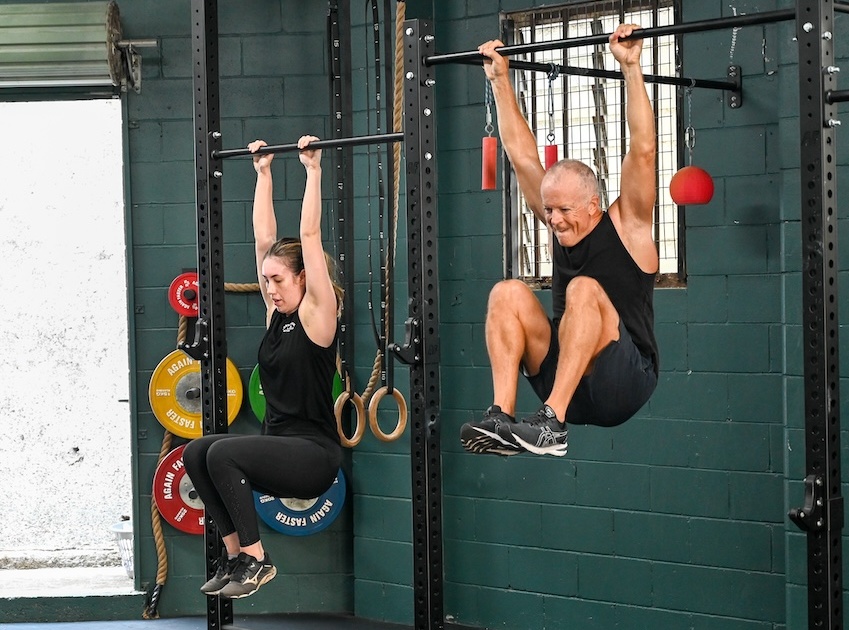Ice baths, also known as cold water immersion, have long been used by athletes as a post-workout recovery method.
The concept of immersing the body in icy water for a few minutes may seem daunting, but the benefits it offers in terms of muscle recovery and performance enhancement make it a popular practice among athletes in various sports disciplines.
In this article, we will explore the science behind ice baths and their impact on muscle recovery.
Understanding the Effects of Cold on Muscles
To comprehend how ice baths contribute to muscle recovery, it’s essential to understand the effects of cold on muscles. When muscles are exposed to cold temperatures, several physiological responses occur:
Reduction in Pain Perception: Cooling the muscles reduces nerve impulse transmission, leading to a decreased level of pain perception. This is why many people use ice packs or cold compresses to alleviate pain and swelling after an injury.
Constriction of Blood Vessels: Cold water immersion induces constriction of blood vessels in peripheral tissues, including muscles. This constriction reduces fluid diffusion, which can help reduce exercise-induced acute inflammation.
Restoration of Heart Rate Variability: Cold water immersion has been shown to help restore heart rate variability, which refers to the variation in the millisecond time periods between successive heartbeats. This restoration is beneficial for athletes as it indicates improved cardiovascular recovery.

The Impact of Ice Baths on Muscle Recovery
Ice baths play a significant role in muscle recovery after intense exercise. The following benefits have been observed:
Reduced Delayed Onset Muscle Soreness (DOMS): Ice baths are effective in reducing the symptoms of exercise-induced delayed onset muscle soreness. DOMS refers to the pain and stiffness experienced in muscles several hours to days after strenuous exercise. By alleviating DOMS, ice baths can facilitate faster recovery and enable athletes to resume training sooner.
Faster Inflammation Reduction: Cold water immersion helps reduce inflammation by constricting blood vessels and limiting the spread of inflammatory mediators. This reduction in inflammation accelerates the healing process and minimises discomfort associated with muscle damage.
Improved Circulation and Waste Removal: Immersion in cold water promotes increased blood flow to the muscles. This enhanced circulation aids in the delivery of oxygen and nutrients to the muscles, facilitating the repair process. Additionally, the increased blood flow helps remove metabolic waste products, such as lactic acid, which can contribute to muscle soreness and stiffness.
The Link Between Ice Baths and Exercise Performance
While ice baths are primarily known for their role in muscle recovery, their impact on exercise performance is a topic of interest among researchers. The effects of ice baths on exercise performance can vary depending on the type of exercise involved:
Strength Exercise: When it comes to strength training, the benefits of ice baths are less pronounced. In fact, cold water immersion after strength exercise may hinder the desired outcomes, such as increasing strength and muscle mass. Cold water immersion can interfere with the natural protein and cellular responses that occur in the muscles after each strength session.
Endurance Training: In contrast, ice baths may have a positive impact on endurance exercise performance. Cooling the exercised muscles through cold water immersion can increase the cellular signal responsible for mitochondrial biogenesis. Mitochondria are structures within cells that release energy, and their increased numbers enhance endurance capacity. Therefore, ice baths may amplify the benefits of endurance training.
Incorporating Ice Baths into Your Recovery Routine
If you’re considering incorporating ice baths into your recovery routine, there are a few key considerations to keep in mind:
Duration and Temperature: Ice baths typically involve immersing the body in water around 10°C for 5 to 10 minutes. However, it’s crucial to consult with a healthcare professional or sports therapist to determine the ideal duration and temperature for your specific needs.
Timing: Ice baths are most effective when performed immediately after intense exercise. This timing allows for optimal muscle recovery and reduces the risk of delayed onset muscle soreness.
Alternatives to Ice Baths: If obtaining ice or access to cold water is challenging, other methods such as cold packs or cold showers can provide similar benefits. These alternatives may be more convenient for individuals who do not have access to ice baths.
Additional Considerations: Contrast Therapy and Saunas
In addition to ice baths, contrast therapy and saunas are other popular methods used for muscle recovery and performance enhancement.
Contrast therapy involves alternating between cold and hot treatments, such as switching between ice baths and hot showers or saunas. This contrast in temperature can further stimulate blood circulation and aid in the recovery process.
Saunas, on the other hand, provide dry heat rather than cold immersion. Sauna sessions can promote relaxation, improve blood circulation, and potentially enhance muscle recovery.
Combining ice baths, contrast therapy, and saunas in your recovery routine can provide a comprehensive approach to muscle recovery and overall well-being.
Discover the Power of Vikasati for Muscle Recovery
Interested in elevating your muscle recovery experience? Explore the unique benefits that Vikasati brings to your post-workout routine. At Vikasati, we understand the importance of effective recovery, whether you’re aiming to boost athletic performance or seeking solutions for muscle rejuvenation. Our sanctuary is designed to meet your needs, offering a range of services tailored to enhance your recovery process.







